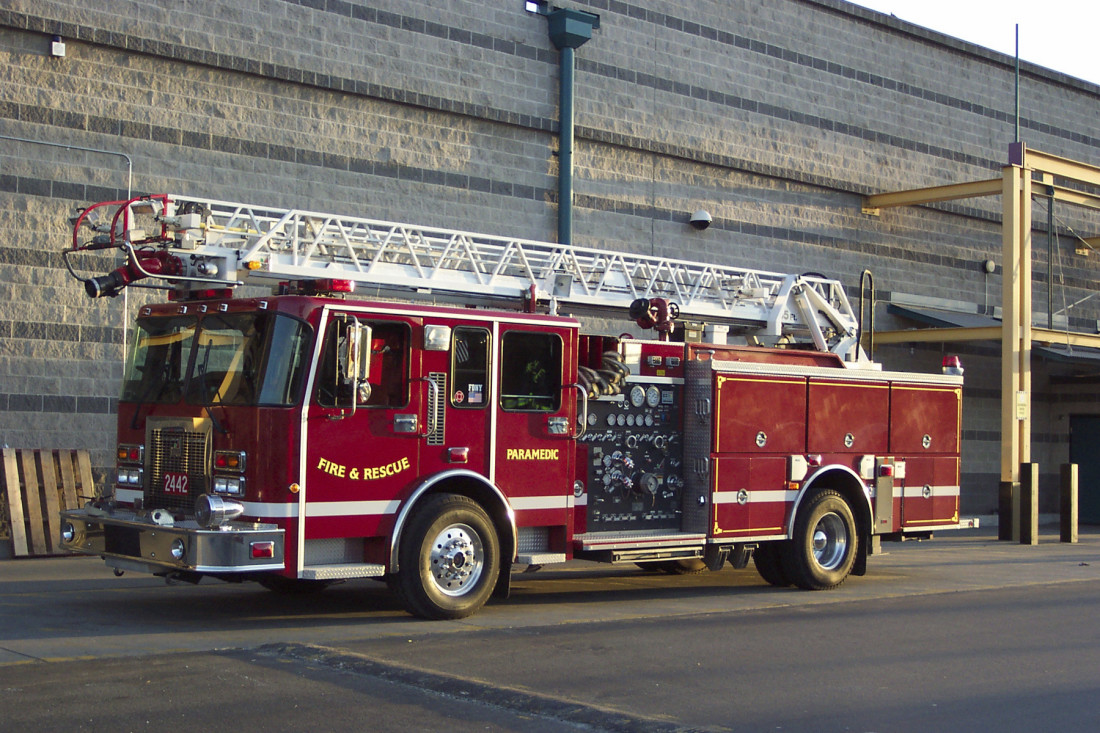Updated Protections for COVID-19 Response Employees: The Differences Between the Prior Emergency Rules and Recent Executive Orders
 There have been nearly 70,000 confirmed or probable COVID-19 cases in Michigan. This figure includes over 6,150 deaths. While other areas of the country are experiencing significant increases in confirmed COVID-19 cases, Michigan appears to have flattened the curve for the time being. We are currently averaging around 250 new cases per day.
There have been nearly 70,000 confirmed or probable COVID-19 cases in Michigan. This figure includes over 6,150 deaths. While other areas of the country are experiencing significant increases in confirmed COVID-19 cases, Michigan appears to have flattened the curve for the time being. We are currently averaging around 250 new cases per day.
As the number of COVID-19 cases in Michigan decline, Governor Whitmer is relaxing restrictions. However, the Governor recently reasserted the protections put in place assuring certain categories of frontline workers easier access to workers’ compensation benefits through the issuance of Executive Orders 2020-125 and 2020-128.
Throughout her handling of the pandemic, Governor Whitmer and members of her administration have issued Executive Orders and Emergency Rules seeking to protect certain categories of frontline workers. Specifically, the March 18, 2020 and March 30, 2020 Emergency Rules and two recent Executive Orders—2020-125 and 2020-128—create a presumption that COVID-19 is a personal injury arising out of and in the course of employment for certain classifications of workers.
On March 18, 2020, the Director of the Michigan Department of Labor and Economic Opportunity (“Director”), with the concurrence of the Governor, promulgated a first set of Emergency Rules pertaining to “first response employees.” (See our earlier March 20, 2020 and March 30, 2020 Legal Updates.) The first set of Emergency Rules created an irrebuttable and absolute presumption that certain “first response employee(s)” sustained a “personal injury that arises out of and in the course of [their] employment” if the employer directed the employee to quarantine due to a confirmed or suspected exposure to COVID-19, or if the employee was diagnosed with COVID-19 by any one of a number of different delineated methods.
On March 30, 2020, the Director promulgated a new set of Emergency Rules removing the irrebuttable presumption and replacing it with a rebuttable presumption. The new set of Emergency Rules also limited the “personal injury” to those “first response employee(s)” diagnosed with COVID-19, excluding those employees directed by the employer to quarantine secondary to a confirmed or suspected exposure to COVID-19. (See our April 2, 2020 Legal Update.)
On June 17, 2020, Governor Whitmer issued Executive Order 2020-125 (“EO-2020-125”) which replaced the March 30, 2020 Emergency Rules. She subsequently issued Executive Order 2020-128 (“EO-2020-128”) on June 18, 2020 clarifying the scope of Executive Order 2020-125. EO-2020-125 and EO-2020-128 are identical in all material respects with the latter revising some ambiguous language which could have created confusion.
EO-2020-128 was issued to prevent undermining the confidence in the workers’ compensation system among the “most critical members of the workforce” by unduly shifting the risk to the worker.
EO-2020-128 is similar in scope and purpose to the earlier Emergency Rules. Both create a rebuttable presumption of personal injury for certain classifications of employees who are diagnosed with COVID-19 on or after March 18, 2020, either by a physician or test. However, there are several key differences.
The first notable difference is that EO-2020-128 replaces “first response employees” with “COVID-19-response employee(s).” EO-2020-128 indicates COVID-19-response employee means “an employee whose job responsibilities require them to have regular or prolonged contact with COVID-19 in the course of their employment.” The Order then specifically defines certain individuals as COVID-19-response employees for purposes of the Order.
This language can be interpreted in multiple ways and the intent is unclear. The language could be construed to mean that COVID-19-response employees are employees whose job responsibilities require regular or prolonged contact with COVID-19 and the individuals set forth in the Order are deemed to meet these criteria. In the alternative, it could arguably be read to mean the individuals listed in the Order are entitled to the rebuttable presumption only if his or her job responsibilities require him or her to have regular or prolonged contact with COVID-19. This is an issue that will likely be litigated.
The individuals designated as COVID-19-response employee(s) in EO-2020-128 include:
a. A person who is required to report to work in one of the following workplaces:
1. An ambulance operation, as that term is defined in section 20902(5) of the Public Health Code, 1978 PA 368, as amended, MCL 333.20902(5), including advanced mobile emergency care services;
2. A county medical care facility, as that term is defined in section 20104(3) of the Public Health Code, MCL 333.20104(3);
3, An emergency response service, as that term is defined in section 102(m) of the Emergency 9-1-1 Service Enabling Act, 1986 PA 32, as amended, MCL 484.1102(m);
4. A home for the aged, as that term is defined in section 20106(3) of the Public Health Code, MCL 333.20106(3);
5. A hospice, as that term is defined in section 20106(4) of the Public Health Code, MCL 333.20106(4);
6. A hospital, as that term is defined in section 20106(5) of the Public Health Code, MCL 333.20106(5); or
7. A nursing home, as that term is defined in section 20109(1) of the Public Health Code, MCL 333.20109(1).
b. A person working in a home health agency, as that term is defined in section 20173a(15)(f) of the Public Health Code, MCL 333.20173a(15)(f), or a visiting nurse association, who is required to provide in-person medical care to patients.
c. A person working as a physician, physician assistant, licensed practical nurse, registered professional nurse, medical first responder, nurse, emergency medical technician, emergency medical technician specialist, paramedic, or respiratory therapist who is required to provide in-person medical care to patients.
d. A law enforcement officer, as that term is defined in section 2(f) of the Michigan Commission on Law Enforcement Standards Act, 1965 PA 203, as amended, MCL 28.602(f), to the extent the law enforcement officer is required to report to work and interact with the general public.
e. A motor carrier officer within the Michigan Department of State Police as described in section 6d of the Michigan State Police Act, 1935 PA 59, as amended, MCL 28.6d.
f. A firefighter, as that term is defined in section 1(n) of the Fire Prevention Code, 1941 PA 207, as amended, MCL 29.1(n).
g. A member of an emergency rescue team, as described in section 161(j) of the Worker’s Disability Compensation Act ("WDCA"), MCL 418.161(j), to the extent that the member is required to report to work and interact with the general public.
h. A volunteer civil defense worker, as described in section 161(g) of the WDCA, MCL 418.161(g), to the extent that the worker is required to report to work.
i. An on-call member of a life support agency, as described in section 161(h) and (i) of the WDCA, MCL 418.161(h) and (i), to the extent the member is required to report to work.
j. A state or local government employee that is required to work within the secured perimeter of a penal institution, including but not limited to correctional facilities, jails, and detention centers.
EO-2020-128 encompasses any employee “reporting to work” at an ambulance operation, county medical care facility, emergency response service, home for the aged, hospice, hospital, or nursing home. Similarly, EO-2020-128 expands the scope of coverage to any state and local government employees working within the secured perimeter of a penal institution. This would include but is not limited to janitorial staff, office workers, and food service workers in addition to the corrections officers which were covered under the prior Emergency Rules, assuming those workers are employees of the state or local government.
Unlike under the prior Emergency Rules, under EO-2020-128 law enforcement officers and members of emergency rescue teams are only covered if the employees are required to report to work and interact with the general public. Similarly, volunteer civil defense workers and on-call members of a life support agency are only covered if the employees are required to report to work. These changes narrow the scope of who is covered within these job classifications.
Motor carrier officers within the Michigan Department of State Police and firefighters are considered COVID-19-response employees simply by the nature of their occupation. No additional requirements such as reporting to work or interacting with the general public are explicitly required. However, this remains subject to the rebuttable presumption.
The second notable difference is that, EO-2020-128 creates a presumption of a “personal injury” as defined by section 401(2)(b) of the WDCA, while the prior Emergency Rules established a personal injury but did not define the term. Personal injuries under section 401(2)(b) are often referred to as occupational diseases.
Specifically, section 401(2)(b) indicates a personal injury “includes a disease or disability that is due to causes and conditions that are characteristic of and peculiar to the business of the employer and that arises out of and in the course of the employment. An ordinary disease of life to which the public is generally exposed outside of the employment is not compensable.”
Typically, viruses are arguably considered ordinary diseases of life which anyone can catch irrespective of vocational setting. However, the language of EO-2020-128 extinguishes such an argument with respect to COVID-19-response employees who are diagnosed with COVID-19 by specifically delineating a personal injury under section 401(2)(b) is established through diagnosis. Of course, if the employer can show specific facts to the contrary, it can overcome the presumption. As with the prior Emergency Rules, this is an extremely high burden requiring the employer to prove the employee contracted COVID-19 outside the employment.
EO-2020-128 does not delineate any specific penalties for violation of the Order. However, based on the language related to assuring COVID-19-response employees are afforded the protections under the WDCA, it follows that violations of the Order will be subject to penalties delineated under the WDCA.
EO-2020-128 will remain in effect throughout the duration of the state of emergency and disaster declared in Executive Order 2020-127 or the end of any subsequently declared state of emergency and disaster arising out of the COVID-19 pandemic. The emergency and disaster declaration in EO-2020-127 remains in effect through July 16, 2020 and could be extended.
The declared states of emergency and disaster are currently the subject of litigation in the courts. EO-2020-128 specifically addresses what will happen in the event any portion of the Order is adjudicated invalid. If the Order is adjudicated as invalid, the March 30, 2020 Emergency Rules will go back into effect.
If you have any questions about the application of EO-2020-128, please contact us. We are here to assist you with making determinations on these often complicated issues of first impression:
- Alicia Birach...248.785.4172...abirach@fosterswift.com
- Mike Cassar...517.371.8110...mcassar@fosterswift.com
- Brian Goodenough...517.371.8147 (Practice Group Leader)...bgoodenough@fosterswift.com
- Tyler Olney...248.538.6352...tolney@fosterswift.com
- Mike Sanders...517.371.8210...msanders@fosterswift.com
Categories: COVID-19 and Workers' Compensation, Legislative Updates

Alicia Birach is a member of the Employer Services Practice Group and works out of the firm's Southfield office. She has extensive experience representing insurance carriers, third party administrators and employers against workers' compensation claims. Additionally, she is experienced in counseling employers on labor and employment issues.
View All Posts by Author ›


 Share
Share